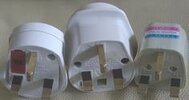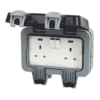Anyone remember the days when things electrical were commonly sold without a plug and you fitted your own.
When did it become commonplace to find them already included.
When did it become mandatory for them to be already fitted.
The reasons I am asking is because my generation folks often knew how to fit a plug and often it was taught in schools too.
I`m not suggesting they were always fitted properly or selected with care, especially fuse size but it was a pretty common practice.
Later generations of folks became less aware.
I would be grateful for any opinions and any date facts too.
When did it become commonplace to find them already included.
When did it become mandatory for them to be already fitted.
The reasons I am asking is because my generation folks often knew how to fit a plug and often it was taught in schools too.
I`m not suggesting they were always fitted properly or selected with care, especially fuse size but it was a pretty common practice.
Later generations of folks became less aware.
I would be grateful for any opinions and any date facts too.






